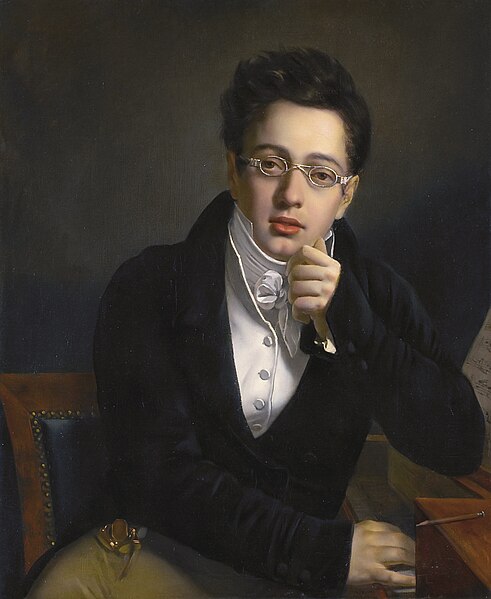Symphony No. 8 (Schubert)
Franz Schubert's Symphony No. 8 in B minor, D. 759, commonly known as the Unfinished Symphony, is a musical composition that Schubert started in 1822 but left with only two movements—though he lived for another six years. A scherzo, nearly completed in piano score but with only two pages orchestrated, also survives.
Third movement, first page, facsimile, 1885, in J. R. von Herbeck's biography
Franz Schubert Memorial in Vienna. Schubert lived here in 1822–23 with his friend Franz von Schober and wrote the Unfinished Symphony.
Franz Peter Schubert was an Austrian composer of the late Classical and early Romantic eras. Despite his short life, Schubert left behind a vast oeuvre, including more than 600 secular vocal works, seven complete symphonies, sacred music, operas, incidental music, and a large body of piano and chamber music. His major works include the art songs "Erlkönig", "Gretchen am Spinnrade", "Ave Maria"; the Trout Quintet, the unfinished Symphony No. 8 in B minor, the "Great" Symphony No. 9 in C major, the String Quartet No. 14 Death and the Maiden, a String Quintet, the two sets of Impromptus for solo piano, the three last piano sonatas, the Fantasia in F minor for piano four hands, the opera Fierrabras, the incidental music to the play Rosamunde, and the song cycles Die schöne Müllerin, Winterreise and Schwanengesang.
The house in which Schubert was born, today Nußdorfer Straße 54
Possible portrait of the young Franz Schubert c. 1814, attributed to Josef Abel
Caricature of Johann Michael Vogl and Franz Schubert by Franz von Schober (1825)
Watercolour of Franz Schubert by Wilhelm August Rieder (1825).






